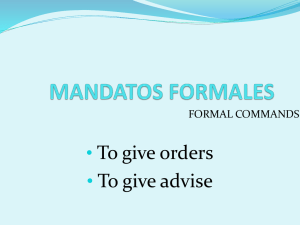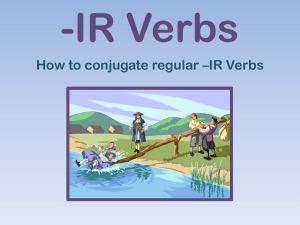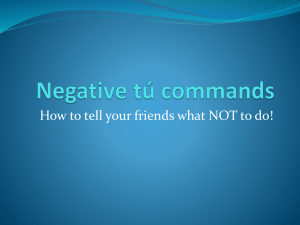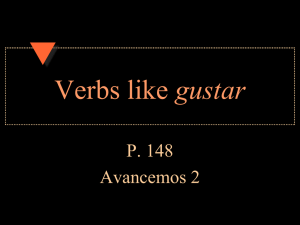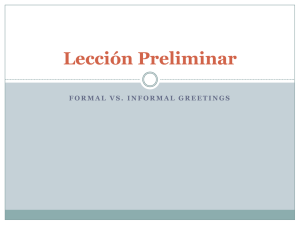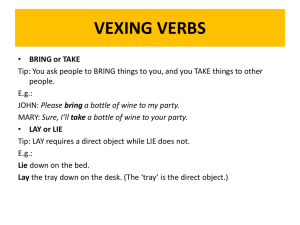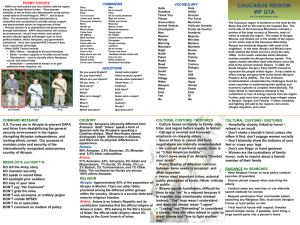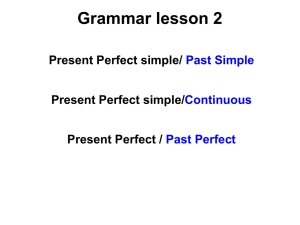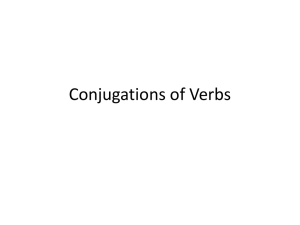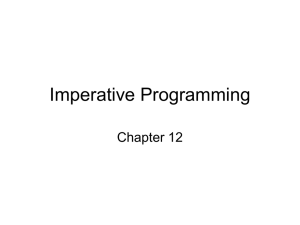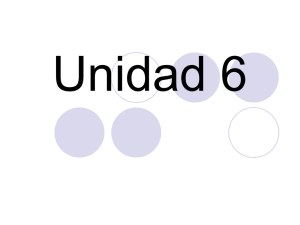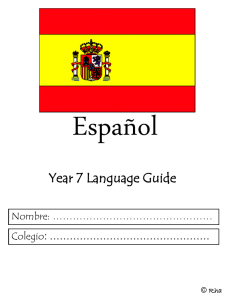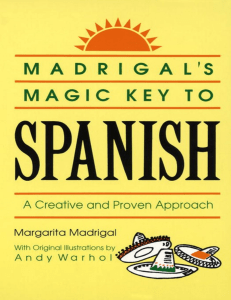El imperativo en español
advertisement
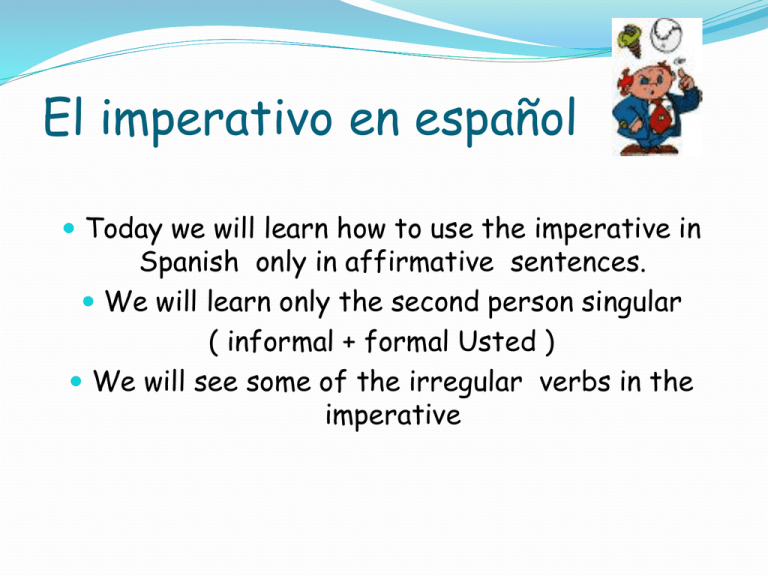
El imperativo en español Today we will learn how to use the imperative in Spanish only in affirmative sentences. We will learn only the second person singular ( informal + formal Usted ) We will see some of the irregular verbs in the imperative What are they ? The imperative or positive familiar Cammands (mandatos) are used when you are telling (not just asking!) somebody to do something or giving him an order. They’re expressed by means of the imperative mood. The Spanish imperative exists for 5 different grammatical people: tú, Ud., nosotros, vosotros, and Uds. Most often we find the formal form Ud. (You polite) Ud: ¡hable usted más despacio! por favor.(speak slowly, please!). Tú: ¡espera a tu madre! (wait for your mother). nosotros: ¡Hablemos de otras cosas! (Let’s talk about other things!). vosotros (only in Spain): ¡dormid vosotros! (Go to sleep, you all!). Uds: ¡hablen ustedes más despacio! por favor. (you poeple) speak slowly, please!) But we will only see the second person formal and informal today When do we use it? We use it mainly for : • To tell people what to do • • To give permission • To give directions General rules Imperative mood only has one tense, the present tense. Spanish verbs are always either regular or irregular as it happens with English verbs. All Spanish verbs end either in "-ar", "-er" or "-ir ". These are the three Spanish conjugations. For the verbs ending in -ar: tú (You) -a usted (he, she, you formal)-e For example hablar: Remove the -ar and keep hablthen add the endings Tu- habl-a Usted – habl-e For verbs in –er and –ir the endings are the other way out. Easy!!!! Tu – e Usted – a For example the verb correr. Remove the –er and add the ending tu Corr-e Usted Corr-a For verbs in –ir do the same. Verb escribir. Remover the –ir and add the ending. Tu Escrib-e Usted Escrib-a Reminder !!! Look at the reminder, can you translate the commands into English? Commands (Mandatos): tú usted hablar: -a,-e, ¡Habla! ¡Hable! comer: -e, -a, ¡Come! ¡Coma! vivir: ¡Vive ¡Viva! -e, -a, So far so good? However there is a slight problem... but I told you so....... We have some irregular verbs like in English . Let’s aim for ten irregular ones, then Poner –pon, ponga (go to present 1st person and then do the changes) Sacar- saca, saque Tener- ten, tenga ( go to present 1st person ) Seguir- sigue, siga ( go to present 1st person ) Hacer- haz, haga Salir- sal, salga ( go to present 1st person ) Volver- vuelve, vuelva Empezar- empieza, empiece Cerra- cierra- cierre. Traer- trae- traiga. Poor Cinderella! Everybody tells her what to do : The nasty stepsisters The horrible stepmother The Godmother Even the prince!!! Use some of these verbs to make up some sentences : Limpiar, venir, cocinar, volver, bailar,....
